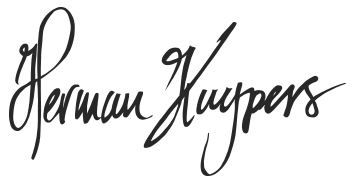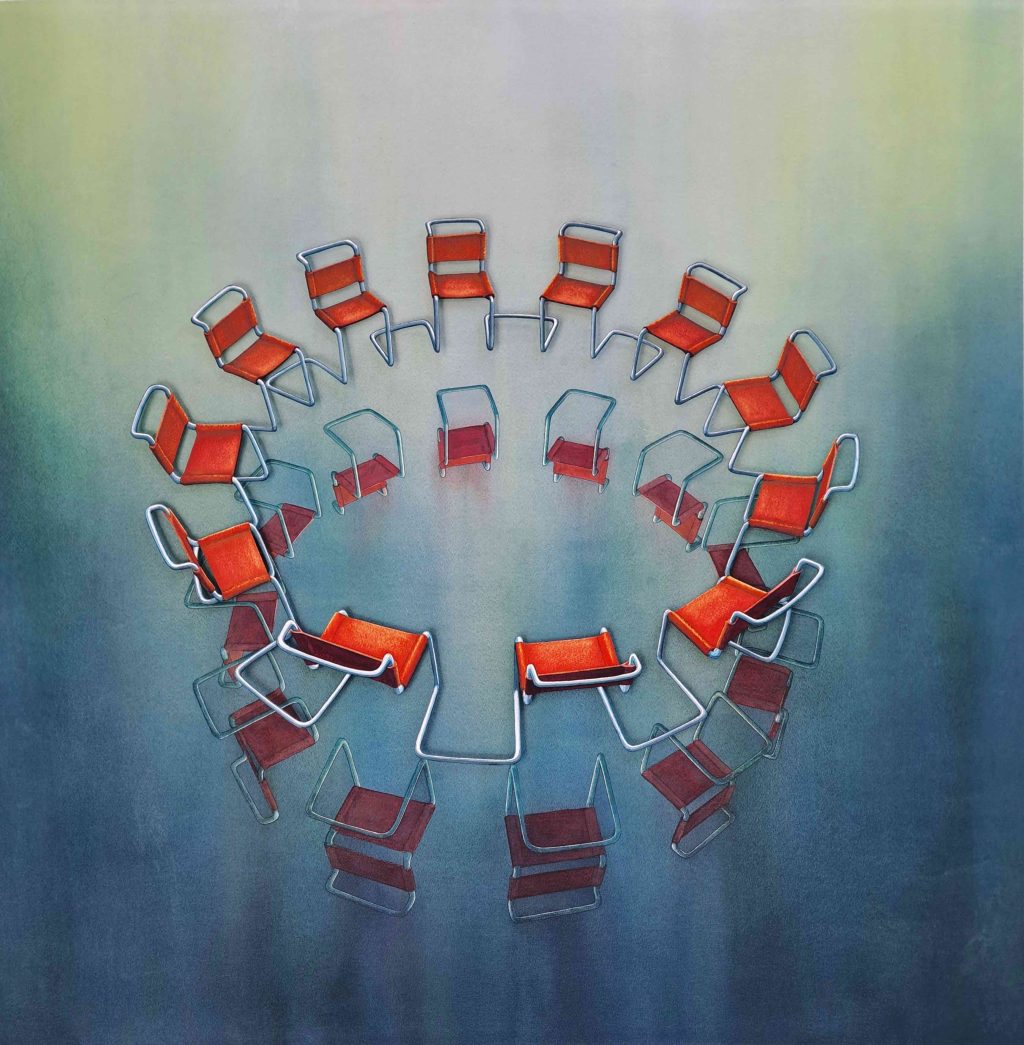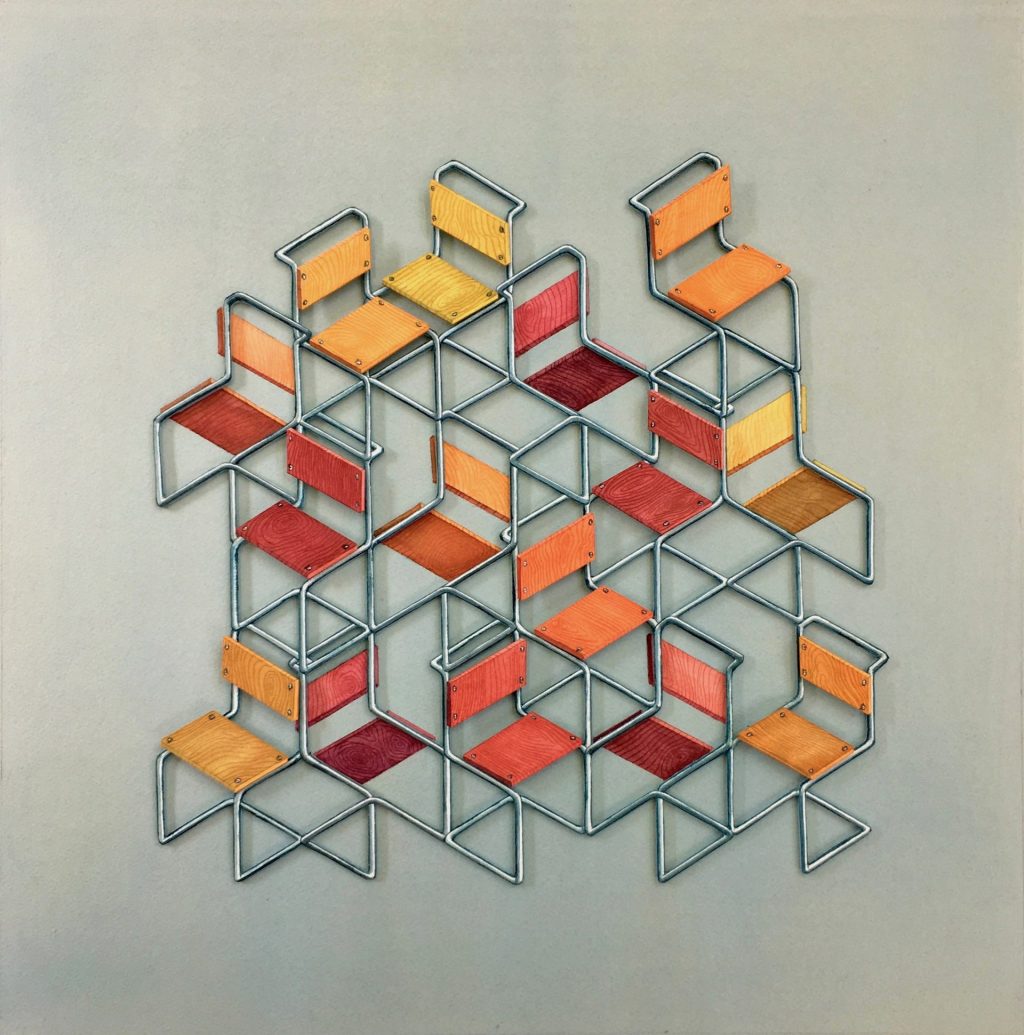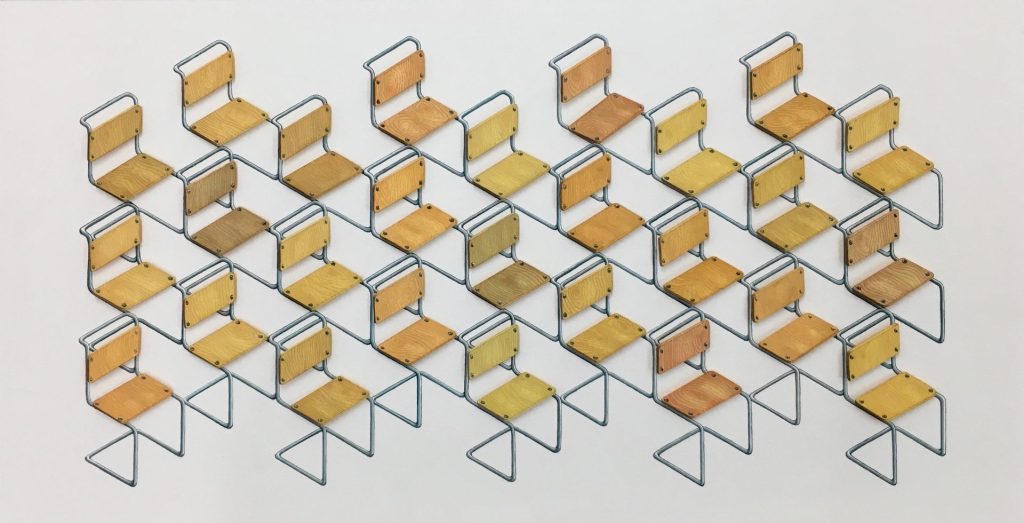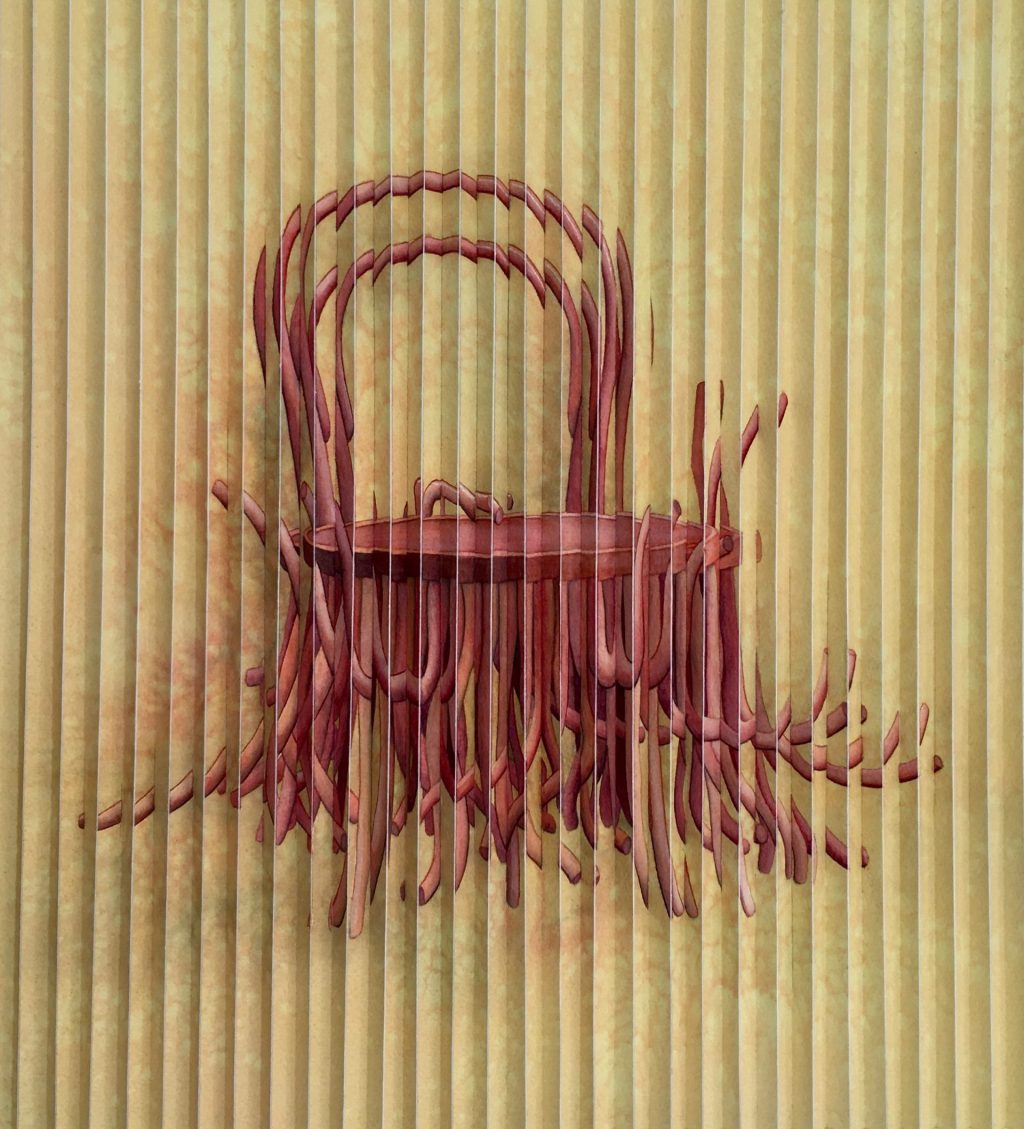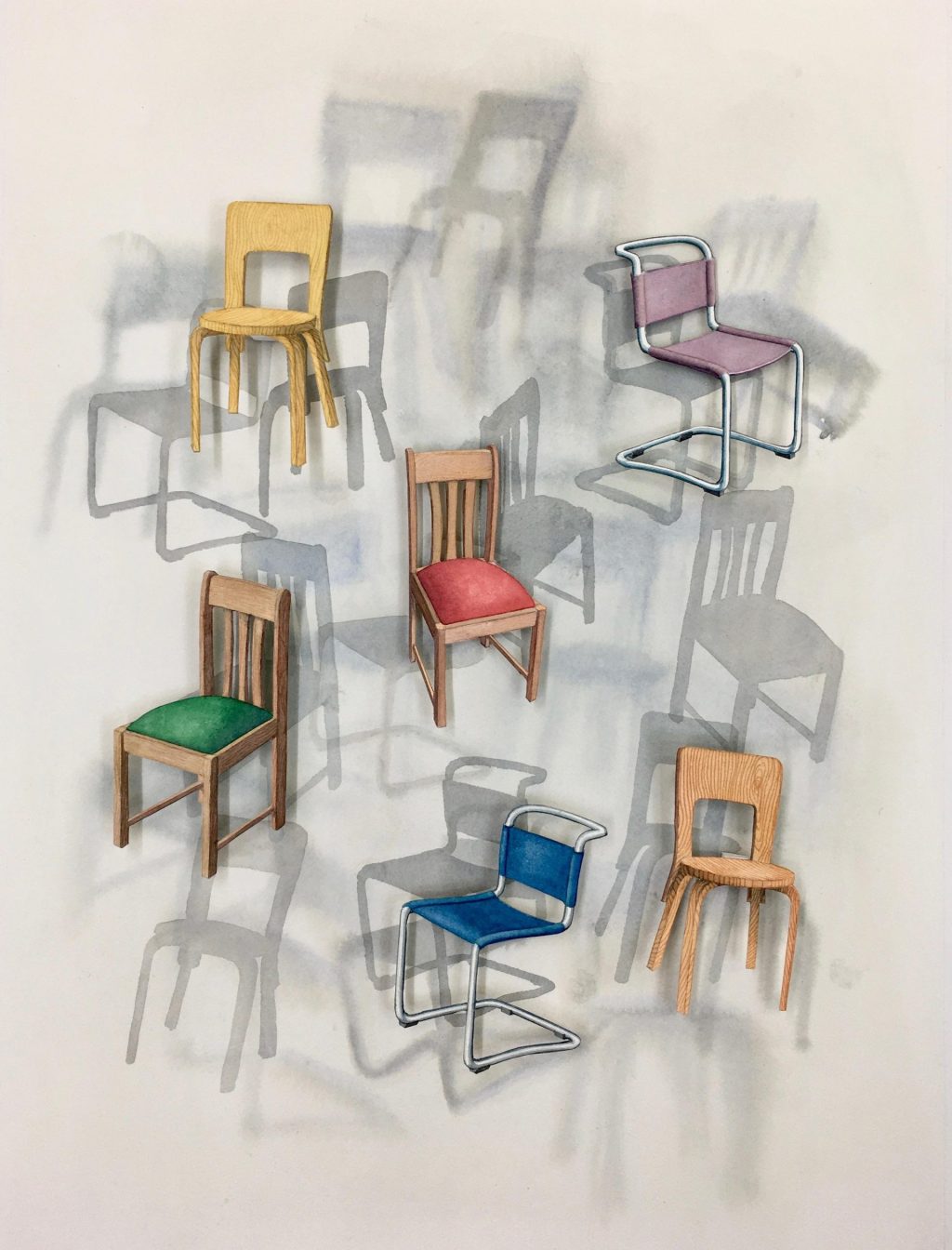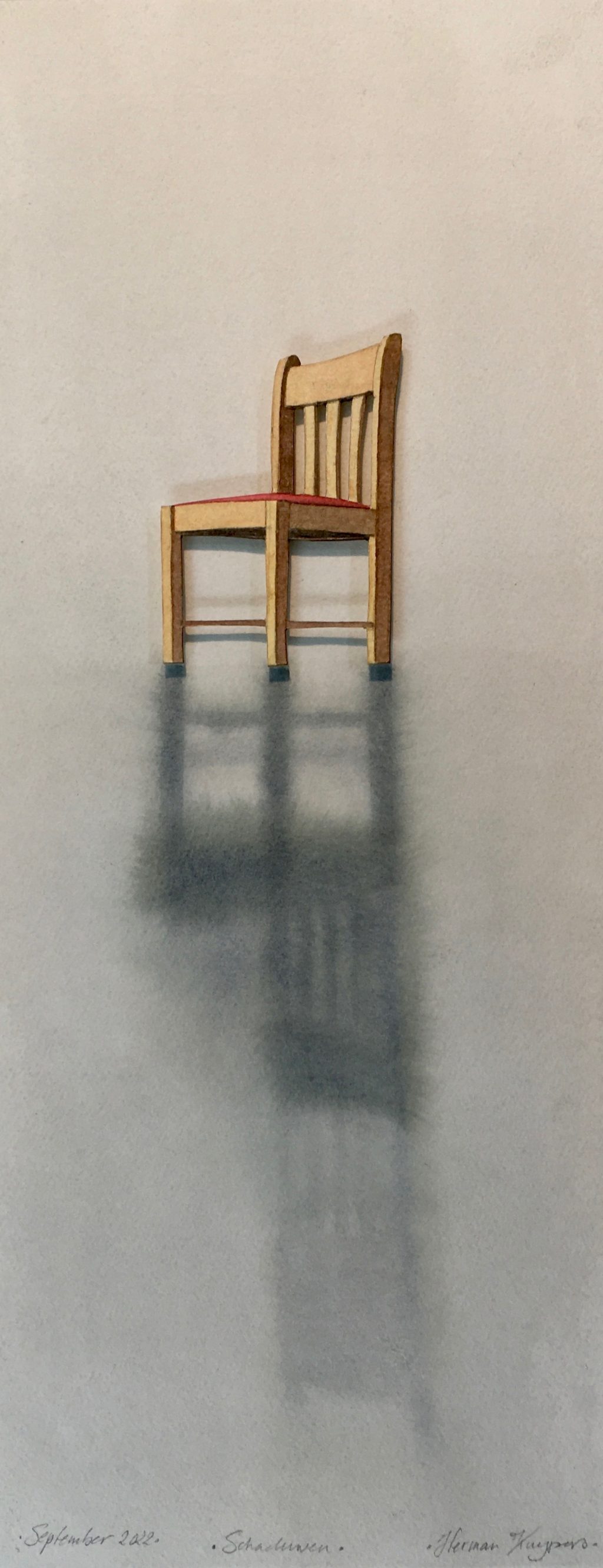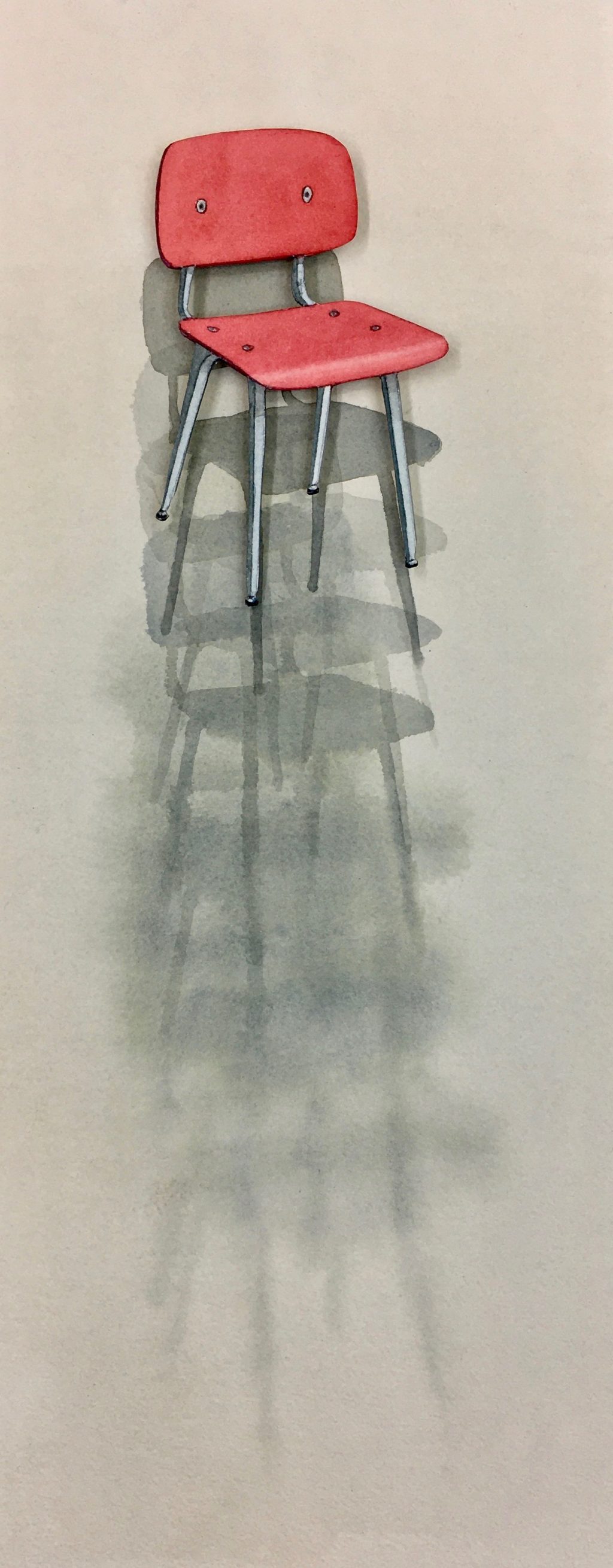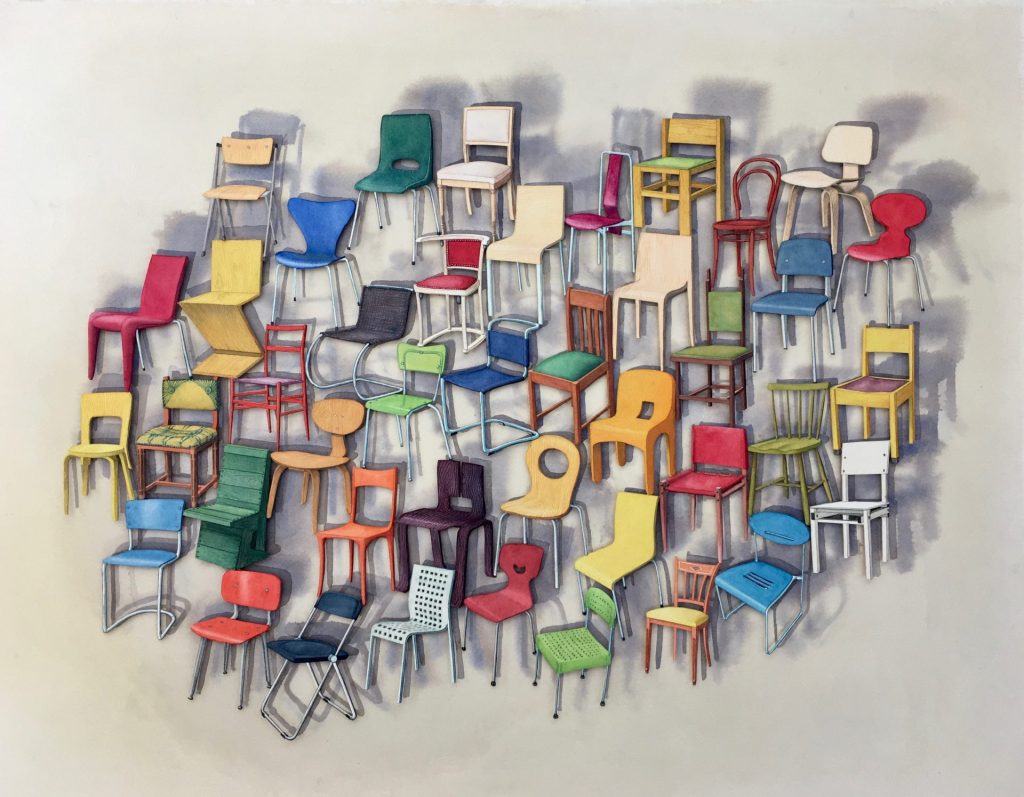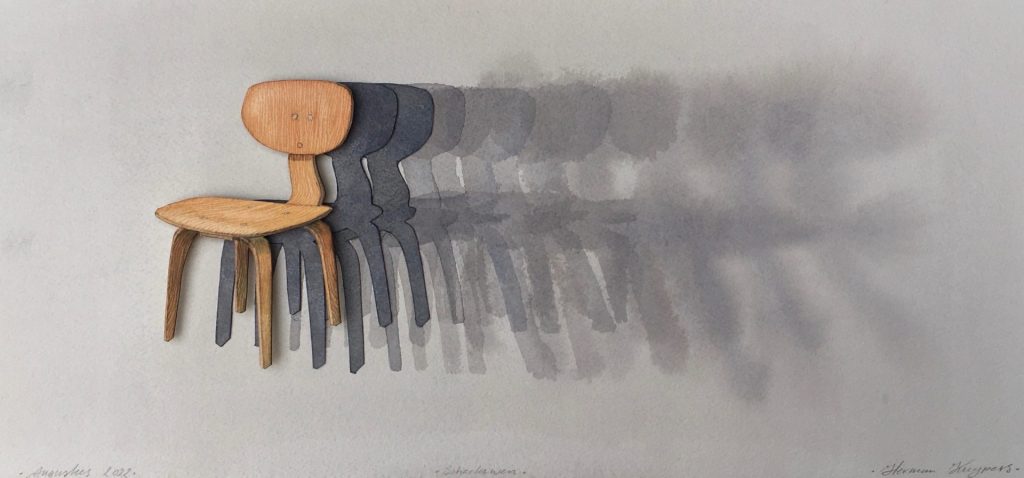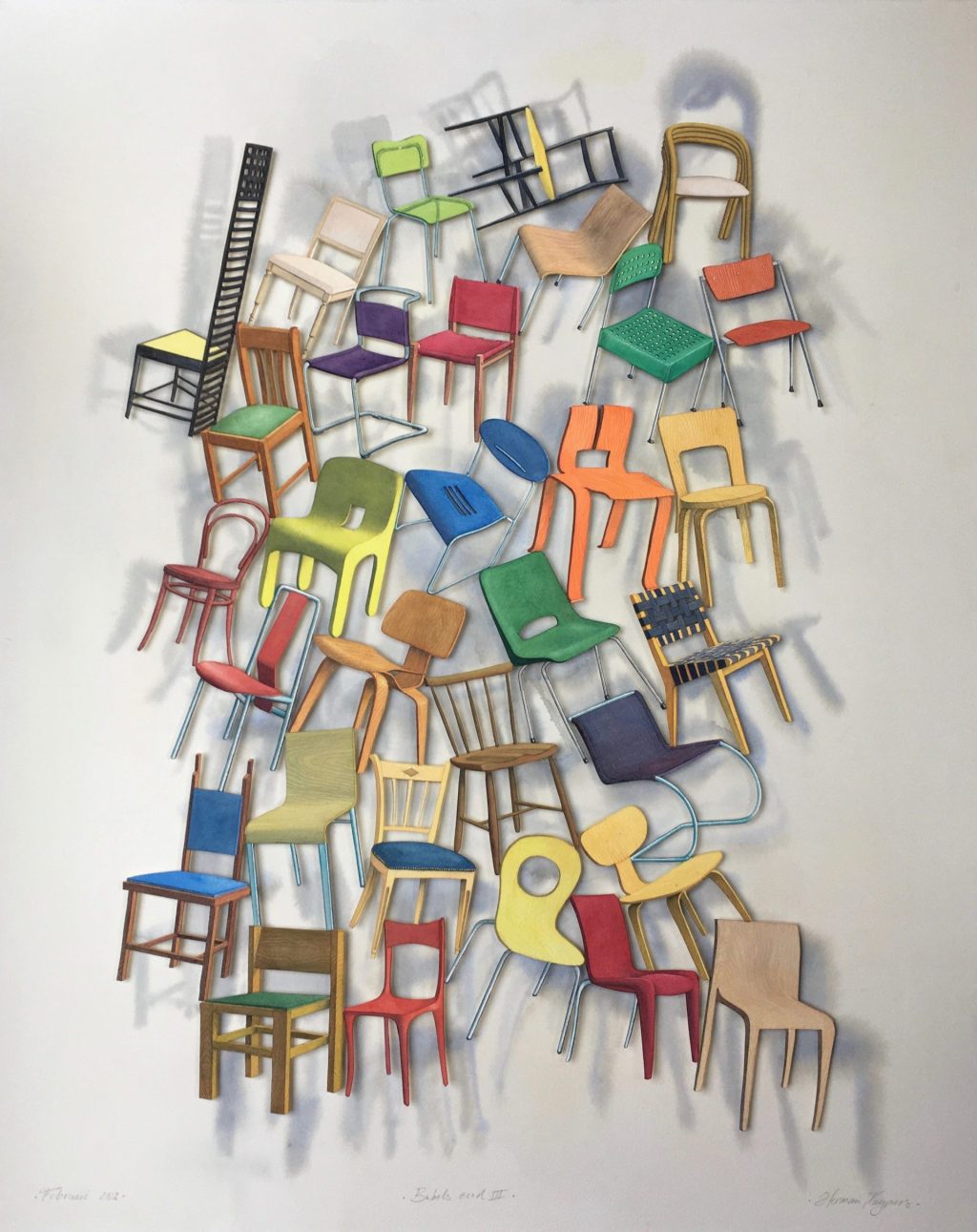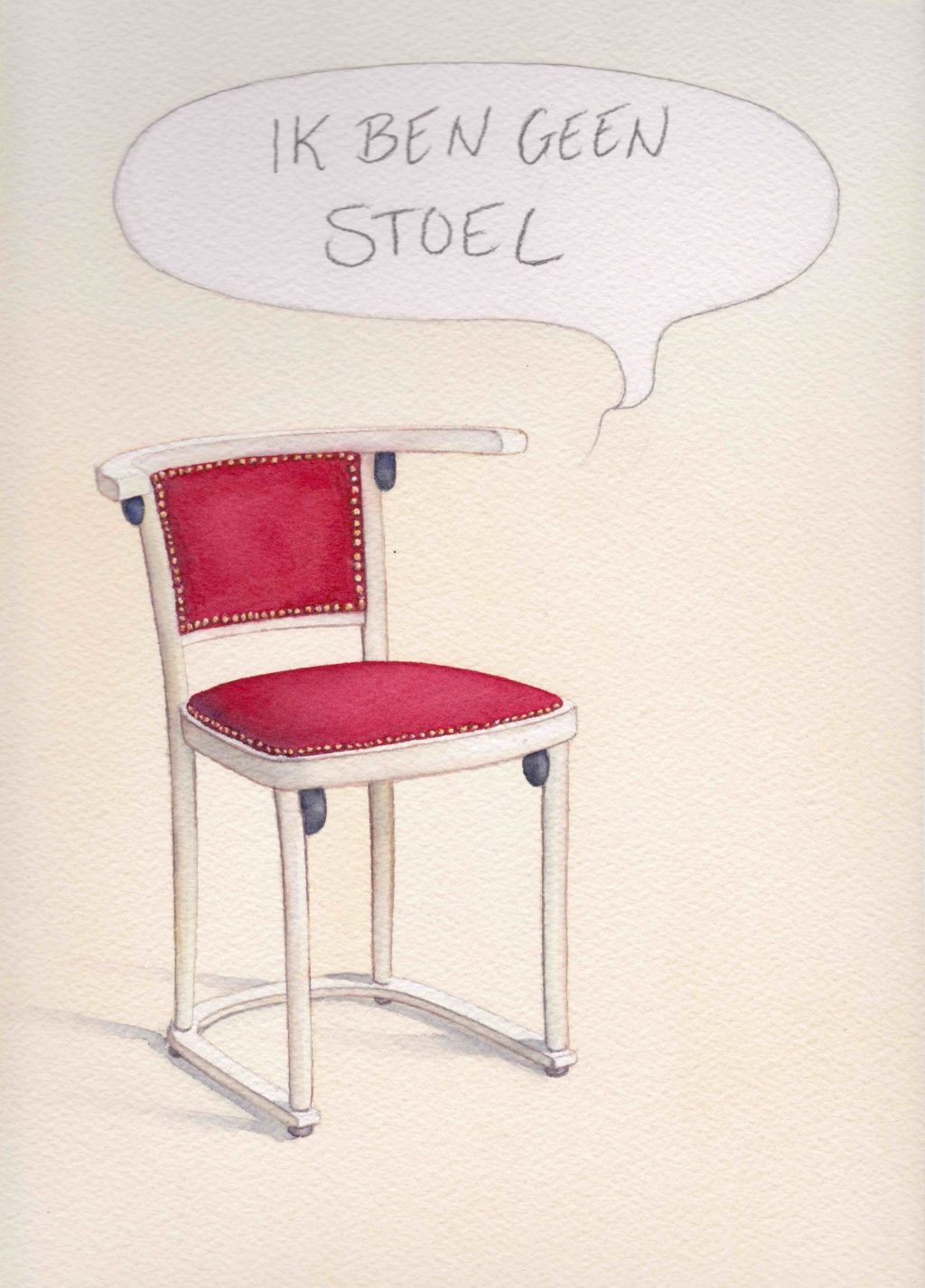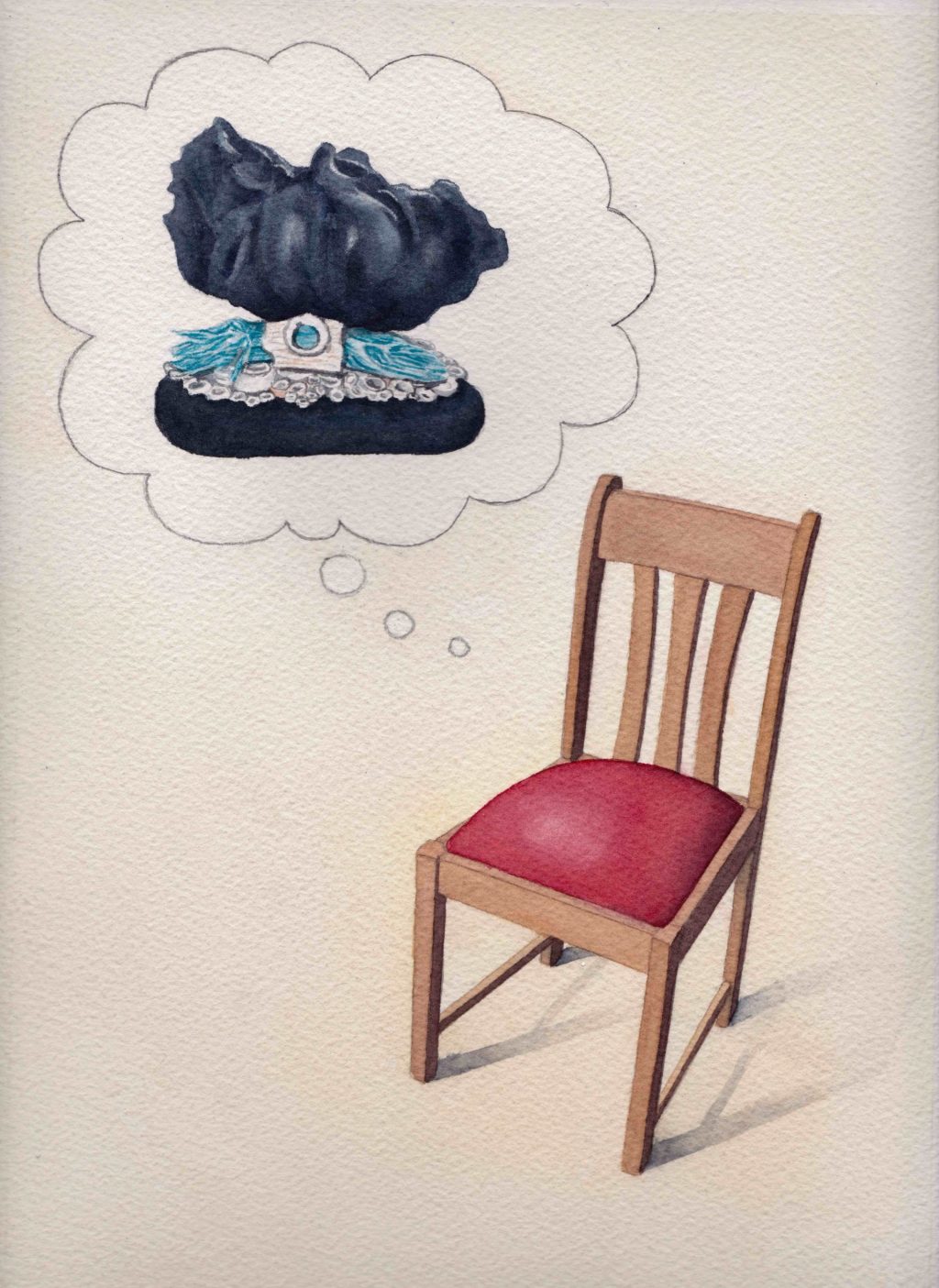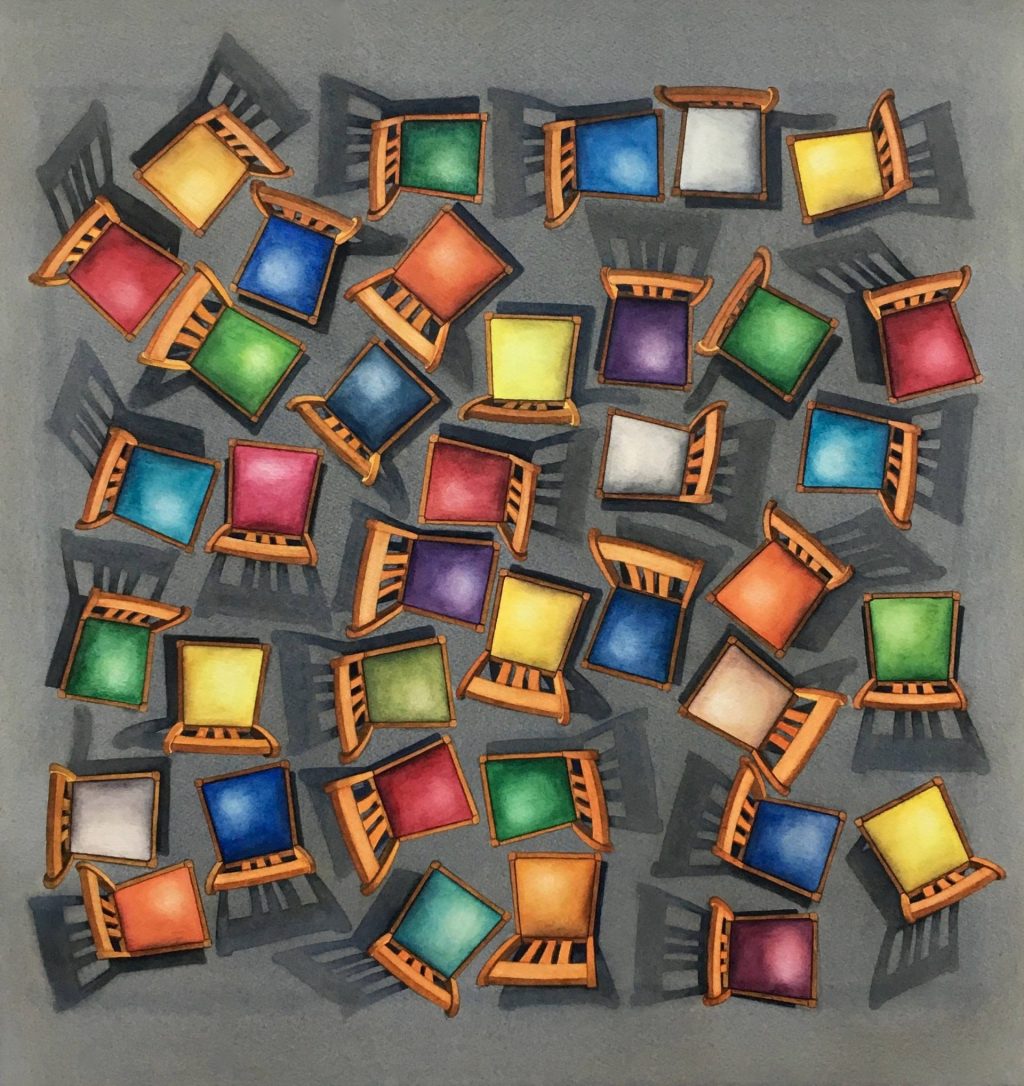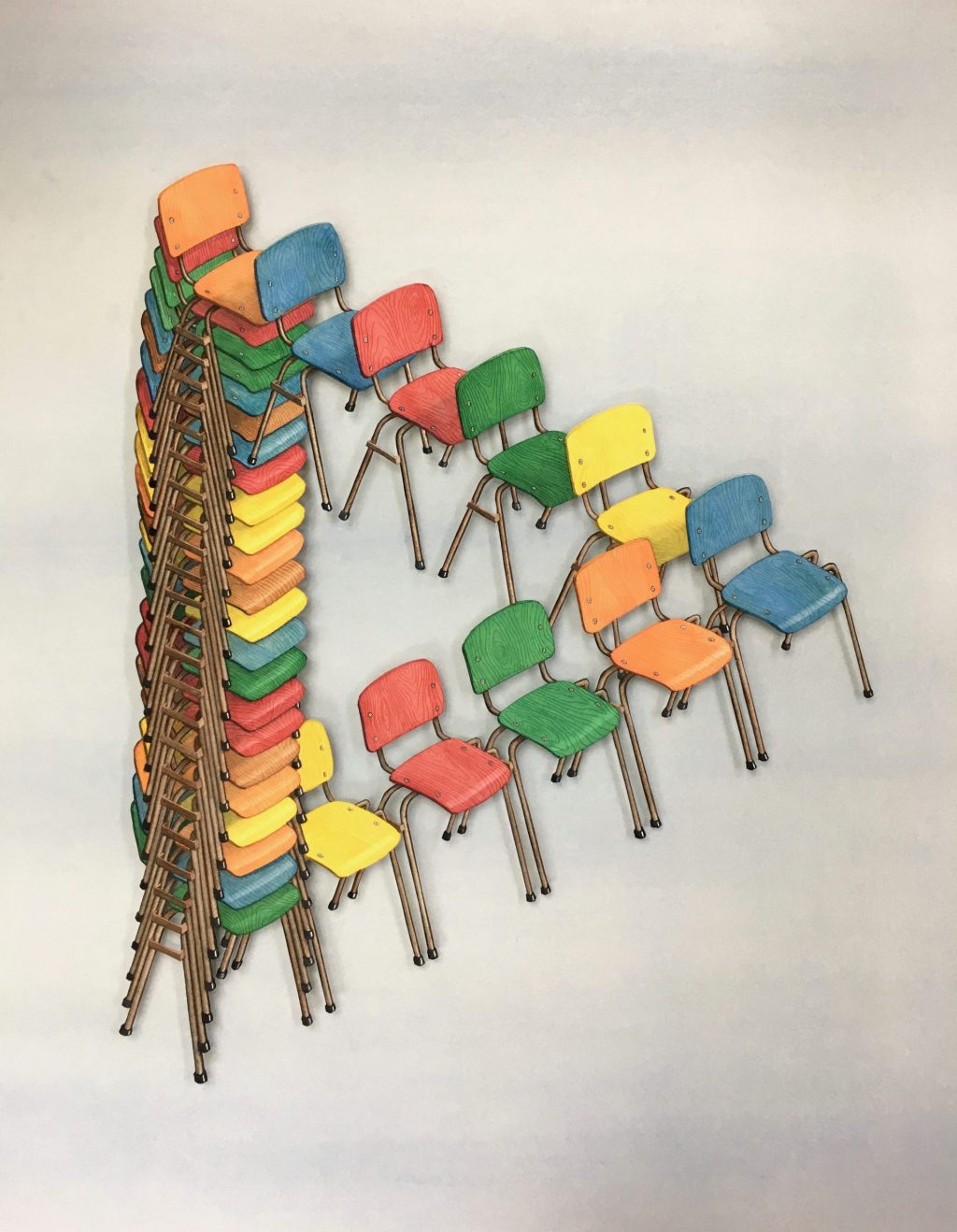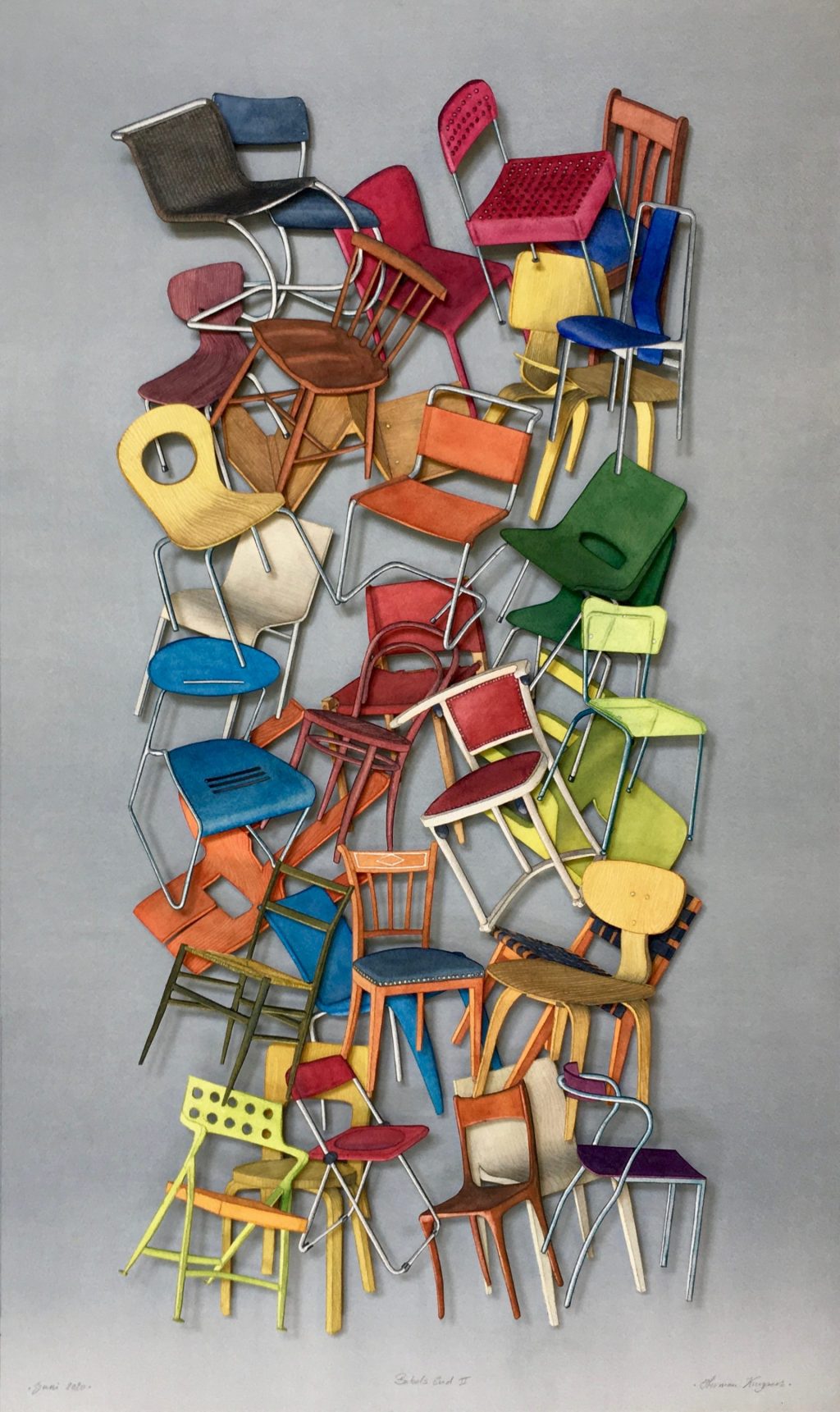Paintings
Tijdkring IX
The title Time Circle first appeared in my work in 2002. Before that, there were many works in which the circle was a crucial part of the image. Like, for example, Meal of Friends or Stoelendans (Musical chairs). Visualizing the intimate connection with each other is perhaps more beautiful than reality because friction quickly begins to occur there. The moment when every individual fits comfortably into the group never lasts long. Recognizing that moment and enjoying it is often only possible when you look back. The cutting technique that I first discovered in Rietveld and subsequently applied in many works such as Stampede or Babel’s End II is also applicable on this scale.
Levelen IV
In the series of ‘levelen’ this is also literally the next level because this time it consists of three layers. Once again indebted to the unsurpassed tubular frame chair, and more specifically the one made from one tube. Ode again to Mart Stam as far as I’m concerned. This chair lends itself particularly well in an isometric grid, see previous works such as Descendants and Descendants II. The isometric system, also known as ‘Japanese perspective’, is particularly known by MC Escher, who based many of his works on it.
Levelen II
The single-tube frame chair lends itself perfectly to this kind of rhythmic compositions with which I can combine my interest in patterns very well.
Depicted so flat via a photo, and now on a screen, you miss the subtle layering that is in the work. Commit yourself by looking at the work from different angles and the image seems to move. Grab the next opportunity to come and see it in real time.
Medusa’s moves
Making the pencil drawing Medusa’s chair, this possibility soon presented itself. The confusing pattern I expected as a result, when combining both points of view together in one drawing, seemed to me to be a nice interpretation of swishing ‘medusa legs’. Of course again with a thonet chair because its chair leg approaches a snake the best!
Shadows III
Shadows shadowing the chairs? Shadows that have come loose? Chairs that exchange their shadows with each other? This choreography of chairs and shadows is enhanced by the incident light adding extra shadows. The image therefore changes subtly under the influence of the variable light.
Shadows II
Making the light work for me. It remains a rewarding discovery. In fact, it’s so obvious that I’m surprised I didn’t think of it sooner. Watercolor lends itself particularly well to working with subtle tones and thus creating or suggesting shadows, for example. So after Shades of grey, Shadows and Rising Revolt I made this Shadows II.
Rising Revolt
It’s almost impossible, especially for someone my age, not to have sat in a revolt chair somewhere in your life. Manufacturer Ahrend still makes this Friso Kramer design. One of the reasons to use this chair working on this idea. Of course, a recently purchased booklet, entirely devoted to this chair, gave it another boost. It also appears in my much larger work Crowd which I just completed, which is another reason.
Crowd
A large number of very different characters all have the same goal, it seems. They come running and go to… But where are they going? Are they gathering and possibly getting ready for something that is about to happen? A speach or a performance. Or is it a protest march? Is there too little sitting nowadays? Or too much of course.
Shades of grey
Step out of the shadows. When does a shadow cross into the tangible world? Is that possible? You can at least make the eye believe that. Albeit only very briefly, because then the ratio always comes into play.
It makes a difference that you can go through this ‘process’ again and again, that certainly contributes to the durability of the work.
Babels end III
When falling turns into a choreography with a carefully orchestrated place for all in the whole, the memory fades and the biblical story becomes a myth, and this composition the new reality. Everyday chairs next to icons from the design world, all the same and all different. Painted shadows compete with real shadows , providing a pleasant tingle that subtly changes with the passing of the hours.
Ik ben geen stoel
An unmistakable expression of this chair, ehh, drawn chair. A playful reference to the Belgian surrealist painter René Magritte and in particular to his famous painting ‘Ceci n’est pas une pipe‘.
Is a drawn chair just as much chair? Mentally, yes, then it is the image in your head. But if you want to sit on it? I find this crossing from concept to image to archetype and back again very fascinating. See, for example, the drawing ‘Strip’.
Conceived in an edition of 5, the first from 2017 has been sold. These four are all just completed. Of course I can make one in English, French, etc.
Thinking about…
One of the first members of the artists’ association Hoorn a.s. (that ‘and surroundings’ extends as far as at least Tilburg apparently) has come up with the idea of choosing a work from those members and having the other members respond to it with a work. No one else had any influence on the clutch. Everything was shown at the ‘Encounters’ exhibition in De Boterhal in Hoorn in honor of the association’s 50th anniversary. The Boterhal is the permanent operating base. I was handed a work by Paul Stap. Polychromed wood which he found in his backyard. Paul is (has been) a passionate diver.
‘Thinking of…’ is my reaction to the work of Paul Stap and was therefore shown at the exhibition.
Shadowdancing IV
From the glitter ball, which hangs in a classic disco central above the dance floor, we watch the shuffle and twist of the colorful crowd.
If you look closely, you will see a limited variety of points of view of a chair from above, that have been carefully composed like a piece of music. The eye of the beholder dances from spatial to flat and also along with the performance in search of logic or a pattern.
Stacking chairs II
At the beginning of this century I already drew a pencil drawing based on this triangle. The triangle is named after the British mathematician and physicist Roger Penrose, but was first drawn in 1934 by the Swede Oscar Reutersvärd. I therefore called that pencil drawing ‘To Reutersvärd’. Because in my paintings, in contrast to the pencil drawings, I somehow have to ‘do something’ with the background, the environment, this concept did not lend itself to a painting in my view. The spatial gain that I achieve by mounting the shape (s) separately from the background, as in Babels end and Babels end II, for example, also offered opportunities for a Penrose triangle with Stacking Chairs. Et voilà.
Babel’s end II
A carefully arranged chaos of unique chairs tumbles down thus forming a pattern. The pattern we know; haughtiness that invariably comes before the trap. It is an even more spatial version of Babels end with in this case three layers. The confusion and dynamics are reinforced by the shadows that change depending on the light source(s).
Does it look like this when for example the Tower of Babel III collapses?

